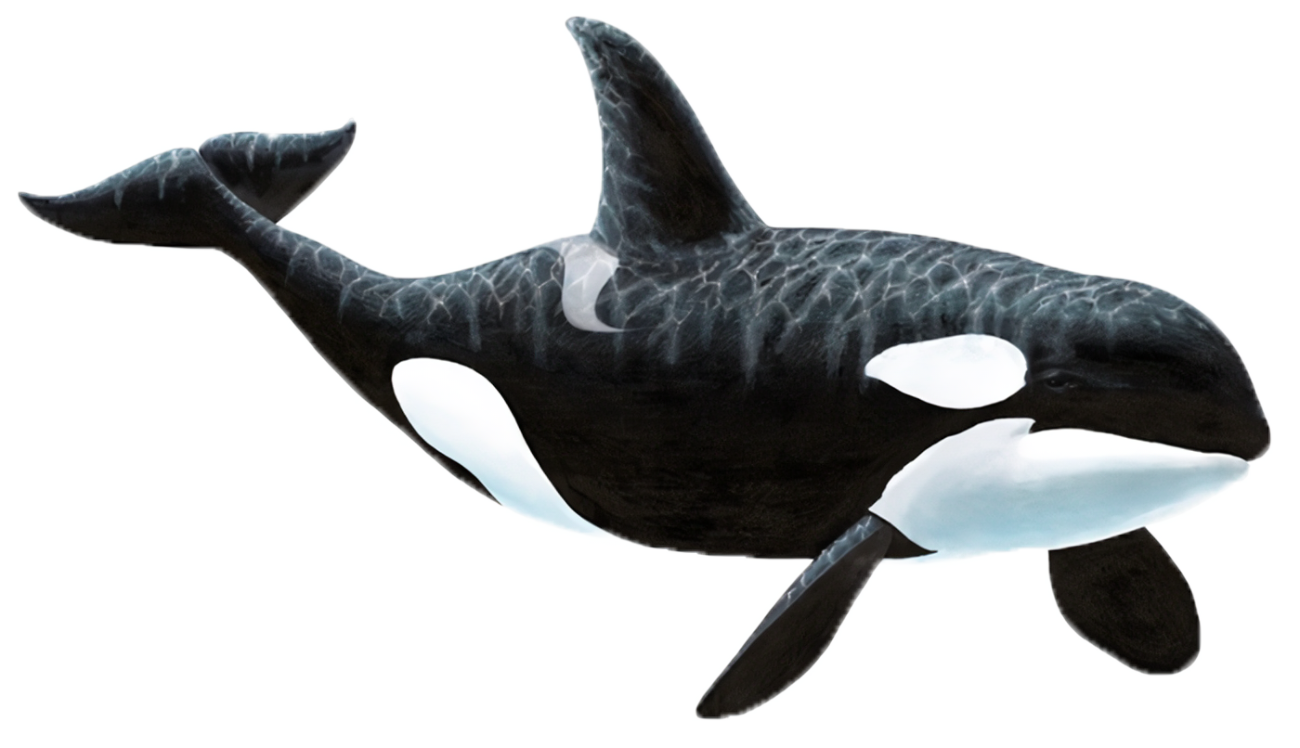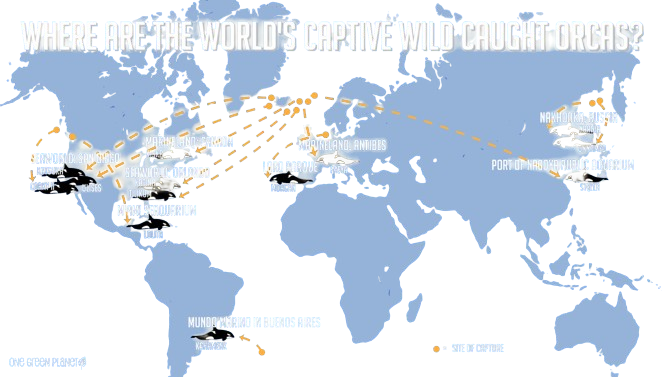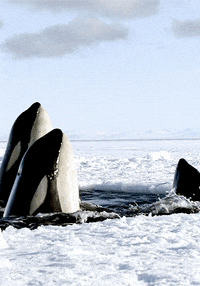Click on me to hear my sound!

| Name | Description | Diet | Life Cycle | Interesting Facts |
|---|---|---|---|---|
| Common name: Orca or killer whale | Physical description: Orcas have distinctive black and white coloring, with a black dorsal side and white underside. They have a sleek, torpedo-shaped body and a tall dorsal fin. | Primary diet: Orcas are apex predators and feed on a variety of prey, including fish, seals, sea lions, and even other cetaceans like dolphins. | Reproduction: Female orcas reach sexual maturity around 10-14 years old and have a gestation period of about 15-18 months. They typically give birth to a single calf, which they nurse for up to two years. | Orcas are highly intelligent and adaptable predators, known for their complex social structure and cultural behaviors within different populations. |
| Scientific name: Orcinus orca | Behavior: Orcas are highly social animals, living in matrilineal pods led by a dominant female. They communicate using vocalizations and echolocation. | Feeding habits: They use sophisticated hunting techniques, such as cooperative hunting in groups, to catch prey. | Life expectancy: Orcas have a lifespan similar to humans, with females living up to 50-60 years or more, while males have shorter lifespans of around 30-40 years. | They are one of the few species known to deliberately beach themselves to hunt seals and sea lions. |


this documentary explores the consequences of keeping killer whales in captivity, focusing on the story of Tilikum, a performing orca involved in several fatal incidents.
This documentary, produced by National Geographic, provides an in-depth look at the behavior, social structure, and hunting techniques of orcas in the wild.